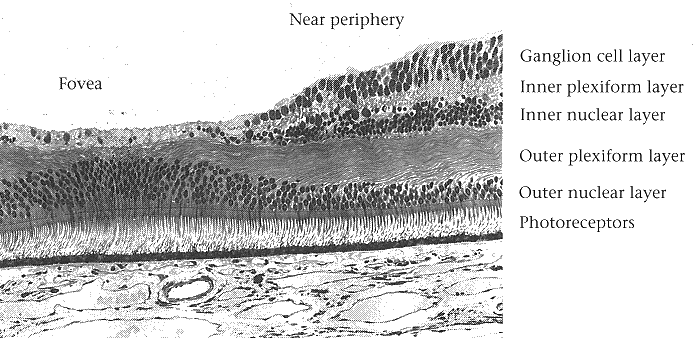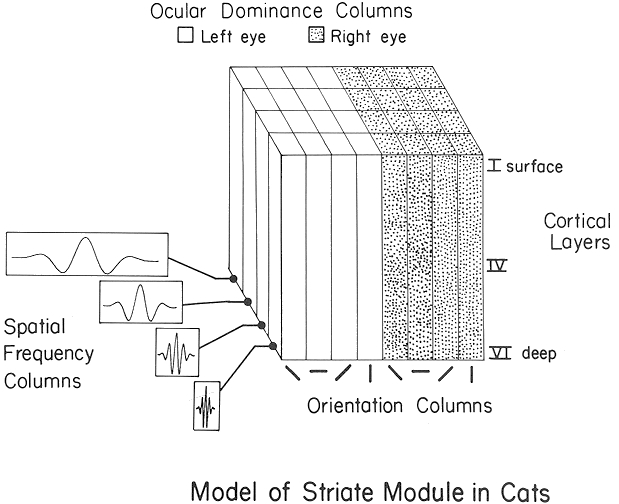
The retina is the nervous tissue in the back and sides of the eye about 25 cm2 in size and between 0.2 and 0.4 mm thick (except the fovea which is thinner), composed of layers of different types of photoreceptors (rods and cones) and neurons. Note that the incoming light has to go through these layers to reach the photoreceptors (the rods and cones) at the bottom of the eye. The visual information is processed through the neural circuits formed by retina cells in the opposite direction and then transmitted to the visual cortex of the brain through the axons of the ganglion cells. Obviously the neurons in the retina must be transparent for the light to go through layers of these cells to reach the receptors. This is a typical example of the difference between a product of evolution and an engineering design.



The layers of different types of neurons that compose the retina perform three basic operations: detect and process the light signal arriving at the retina and then transmit the visual signal to the brain:
The photoreceptors, the rods and cones, detect light signals by converting absorbed photons into neural signals;
The neural circuitry between the photoreceptors and the ganglion cells compares the signals received from the photoreceptors.